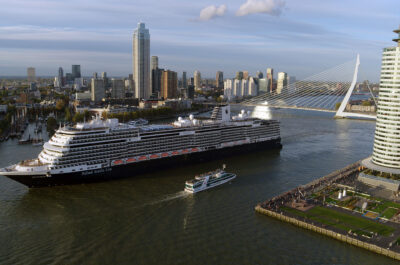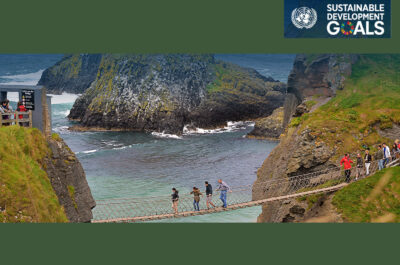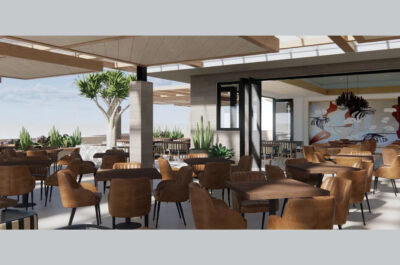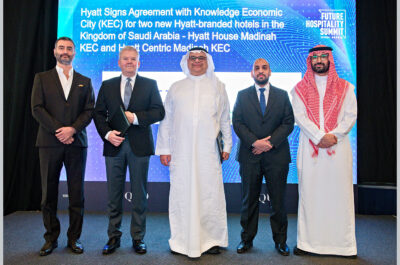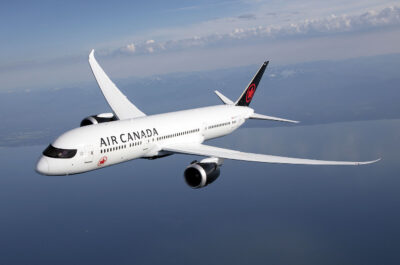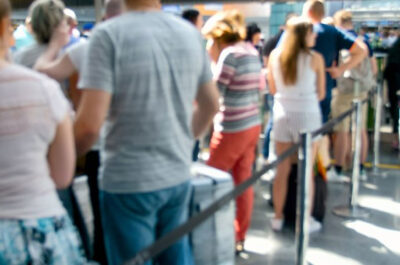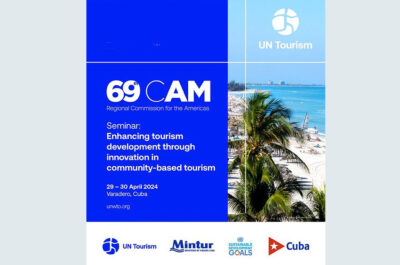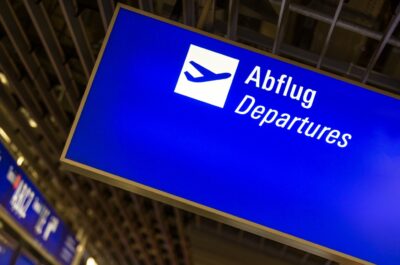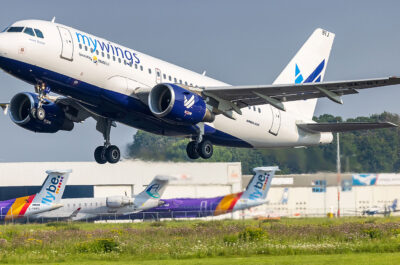…
 THERE ARE millions of people with disabilities in the Pacific Asia region, many of whom would love to travel but cannot. The reason? Most Pacific Asia countries lack the facilities and services to cater to the special needs of this untapped market.
THERE ARE millions of people with disabilities in the Pacific Asia region, many of whom would love to travel but cannot. The reason? Most Pacific Asia countries lack the facilities and services to cater to the special needs of this untapped market.
People with disabilities have the same motivations to travel as the rest of the population. Unfortunately, barriers to travel disproportionately affect people with disabilities, making it harder for them to access and enjoy destinations and attractions. This will have to change, concludes the United Nations Economic and Social Commission for the Asia Pacific (ESCAP) in a major study entitled Barrier-Free Travel for People with Disabilities in the Asia Pacific Region. The study shows that while the industry has moved to attract ecotourists, gays, lesbians, and other niche markets, it has done little or nothing to attract people with disabilities. It also notes that there is a clear correlation between the growing numbers of mature-age travellers and those with disabilities – the elderly often suffer from disabilities of some form but still enjoy travelling.
ESCAP`s study accuses the travel and tourism industry of indirectly, perhaps inadvertently, discriminating against travellers with disabilities. It says: Historically, people with disabilities have been devalued and, as a result, been treated poorly in many areas of service provision. Tourism has been no exception … The attitude the tourism industry has towards people with disabilities has a major impact upon their experiences.
Barrier-Free Travel (BFT)
The politically correct terminology used by the ESCAP study`s authors when referring to a disabled person`s freedom to travel is barrier-free travel (BFT). Written by Bruce Cameron, Beth Foggin and Simon Darcy, the ESCAP study considers all forms of disability – physical, sensory and intellectual. The lead author, Mr. Cameron, is a Sydney-based writer of guidebooks for people with disabilities.
For many years, Bangkok-based ESCAP has been working through its Transport and Tourism Division on ways of improving conditions for BFT. They have organised a number of conferences and seminars and completed a previous study in 2001.
The purpose of this latest study was to:
The study comprised a review of existing literature and secondary data, a questionnaire survey of ESCAP member countries and a direct search of the Internet for elements of good tourism practice.
Of ESCAP`s 60 member countries, only 26 were included in the research, primarily due to time constraints. Of those, only seven responded. One member country declined to participate because it claimed it had committed resources to a similar APEC project. Another member country responded by returning a copy of its response to the APEC project. The researchers inferred from the low response rate that countries either did not have knowledge of BFT or had committed resources to the APEC project and were not prepared to duplicate their efforts.
The study concluded that there is a paucity of statistical data relating to BFT. No country studied had undertaken a national approach to researching the economic potential of the BFT market. However, two Australian states, New South Wales and Queensland, to their credit, had studied the potential of BFT.
BFT Market Size
Based on data gathered from various household and census surveys, the study offered the following estimates on people with disabilities in various countries:
Comparative Estimates of Disability Rates
Country Year of Population (million) Percent of People with
Survey Population Disabilities (Million)
Australia 1983 18.6 19.6 3.6
New Zealand 1996 3.6 19.1 0.7
Canada 1991 30.6 15.5 4.7
China (PRC) 1987 1,265.5 4.9 62
India 1984/85 135.1 4.9 6.6
Pakistan 1991 983.3 4.8 47.2
Thailand Unknown 60 0.8 0.5
Sri Lanka Unknown 18.9 0.4 0.1
Peru Unknown 26.1 0.2 0.1
USA 2000 270.3 19.5 52.7
Austria 1995 8.1 12.5 1.0
Belgium 1997 10.2 12.9 1.3
Denmark 1995 5.3 17.4 0.9
Germany 1998 82 17.3 14.2
Greece 1991 10.6 8.2 0.9
Spain 1999 39.1 9.9 3.9
France 1999 58.8 15.3 9.0
Finland 2000 5.1 22.9 1.2
Ireland N/A 3.6 10.9 0.4
Italy 1994 56.8 7.8 4.4
Luxembourg N/A 0.4 16.5 0.1
Netherlands 1999 15.7 18.6 2.9
Portugal N/A 9.9 18.4 1.8
Sweden 1999 8.9 17.1 1.5
UK 2000 57.7 18.8 10.8
Total 232.6
The chart estimates a total market of 232.6 million people with disabilities in these markets alone, many of which are major generators of visitor arrivals to and within
the Pacific Asia region. This is a significant number of people, most of whom can still travel. Furthermore, most people with disabilities travel with a partner or with family, further increasing the size of this untapped market. The purchasing power potential this represents is to be the subject of a future study.
One issue not canvassed in ESCAP`s study is domestic BFT, which is a strong factor in North America, Europe, Japan, Australia and New Zealand. Domestic BFT could well be an issue for countries in which people have to travel for various reasons including visiting families, medical treatment or employment.
BFT for Seniors
The number of potential visitors from Western countries is growing rapidly as their populations age. There are increasing numbers of Baby Boomer retirees with disposable income and leisure time. Furthermore, the older a person, the more likely he or she will have a disability of some kind. It is therefore relevant to link aging and disability when assessing a potential source market.
The Australian Bureau of Statistics (ABS) identifies that the proportion of Australians with a disability has steadily increased since its first survey in 1981. The rate has steadily increased from 15 percent in 1981, to 19 percent in 1998. This is partly due to an aging population. The disability rate increases from four percent of children five years or younger, to 84 percent of people 85 years or older. In 1998, there were 2.3 million Australians aged 65 years or over. More than half (54 percent) had a disability.
Provision, presentation, promotion and marketing of BFT facilities can provide destinations with a competitive advantage among both seniors and disabled travellers. The seniors market is well-established market for many industries, including the travel and tourism industry. BFT offers a new segmentation opportunity for the travel industry, merging the special requirements of both seniors and disabled travellers. As a bonus, safe and accessible infrastructure and facilities may also be attractive to families with young children
The demand for BFT is being recognised and driven by mature economies such as the United States, Canada, United Kingdom, Germany, Japan, Hong Kong SAR, Singapore, Australia and New Zealand. These countries also happen to be among the largest generators of inbound tourism to the Pacific Asia region.
In Australia, BFT represents a new and emerging market comprising both seniors and people with disabilities. From Australia`s largest source market for overseas visitors, New Zealand, the Australian Tourist Commission (ATC) identifies two market segments:
Collecting information on BFT products at their destinations would be one of the easiest ways for national tourism organisations to begin the process of establishing a new market segment campaign. However, the sheer lack of information is one of the major barriers to establishing a BFT destination. It is also a major barrier to travel for people with disabilities.
Barriers to BFT
The travel and tourism industry, as part of the wider society, has its own barriers impeding its ability to respond to the need for BFT. The ESCAP study finds that there are underlying differences between the Western and Eastern cultural conceptualisations of disability. This involves differences in psychosocial factors, such as religion, ideas of prestige and visibility, empire- and ego-building, social and political inequalities, as well as inappropriate education and training. These conceptualisations may affect the levels of acceptance of travellers with disabilities in various regions.
The many myths associated with travellers with disabilities are reinforcing the barriers preventing destinations from seriously looking at the potential for BFT. Such myths suggest that the market is inconsequential, that people with disabilities travel in `packs`, and that they are best catered for through activities organised by institutions and governments familiar with their needs. Other myths say that accessible facilities are too expensive, that they are never used and that people with disabilities cannot afford to use them.
Other barriers to barrier-free travel include:
COST: Holidays for people with disabilities can cost between 30 and 200 percent more than holidays for the non-disabled. There are well-documented additional costs associated with having a disability. These include mobility equipment (wheelchairs, crutches, orthopedic shoes etc), personal care equipment (shower chairs, commode, hoist, slings etc) and supplies, attendant care and extra transport costs due to inaccessible public transport. The higher the person`s support needs, the more complicated and costly the travel arrangements become. Furthermore, many destinations simply do not have any budget accommodation options for disabled travellers.
INFORMATION: People with disabilities need to do substantially more travel planning than do the non-disabled. Their use of travel agents has generally proven unsatisfactory. The Internet is a great medium for information, however, research has revealed that only eight national tourism organisation Web sites offered any accessibility features when words like `disability`, `disabled` and `handicap` were entered into the Google search engine.
Research has found that disability organisations provide the most important information outside of family and friends. Moreover, travellers with disabilities use the mass media very sparingly.
TRANSPORT: Transport is a major facilitator of socialisation and leisure experiences. In many developed nations with anti-discrimination legislation, the accessibility of public transport to the disabled is a major political issue and has resulted in design and technology solutions to barrier-free public transport, combining curbside, platform and vehicular features. However, both developed and developing countries in Pacific Asia have lagged behind.
Disabled people will avoid a destination if they believe transport problems to be insurmountable or unreasonably difficult. The lack of barrier-free public transport and barrier-free tours adversely affects the inclusiveness of a destination for people with disabilities.
LEGISLATION: The lack of anti-discrimination legislation indirectly affects transport options and the regulation of the built environment, which are central components to the barrier-free nature of a destination. Legislation would encourage builders and transport operators and other stakeholders in a destination to incorporate features that would cater to the physical and sensory requirements of travellers with disabilities. Many countries in Pacific Asia do not have national building codes or standards for access. Current Australian and New Zealand building codes and standards offer a framework for improving access to the built environment.
Secondly, disability discrimination legislation encourages an attitudinal environment, where the behaviour of service providers is sensitive to the needs of travellers with disabilities. Disability services should be part of mainstream service provision, not an added extra.
ACCOMMODATION: Most tourism operators do not understand what accessible or barrier-free accommodation entails. As such, they are unable to provide accurate information about the features in their own rooms. In many cases, accommodation operators (knowingly or not) misrepresent their rooms in promotions, so the traveller upon arrival finds them completely inappropriate. When this occurs in one`s own country it is serious, but when it occurs overseas it can be devastating.
Barriers to accommodation occur in relation to its external environment (its location, proximity to services, public transport, parking etc) through to the reception, facilities, services and the rooms themselves. The accommodation needs of people with disabilities are dependent on the individual, their disability and their necessary level of care. The most important access and information requirements for travellers with disabilities involve the dimensions and organisation of space.
The BFT Destination
The tourism experience involves multiple interactions. Public transport, the built environment, the streetscape, accommodation, attractions, tours, day trips and the attitudes of customer service staff, all play important roles in the tourism experiences of people with disabilities. A BFT destination provides travellers with disabilities easy mobility between their accommodation and the restaurants, shops, clubs, attractions and other places of interest of the destination.
People with disabilities have the same motivations to travel as the rest of the community. However, they have to face a range of constraints and barriers that impede their travel. Two components central to the barrier-free nature of a destination are the country or region`s disability discrimination legislation and the regulation of the built environment.
With or without appropriate legislation, destination marketers and those responsible for planning destinations have an opportunity to be proactive in removing the barriers faced by travellers with disabilities. They can identify elements of good practice and adapt those to their needs. They can assist tour operators in developing the BFT industry by providing a bridge between existing attractions and an evolving transport infrastructure. Nations in a particular geographic region could consider a collective approach in developing BFT in their region.
People with disabilities are travellers and customers – people – with specific needs that have not yet been met, in neither a human sense nor a marketing sense. Destinations first to recognise and service these customers will gain competitive advantage.


